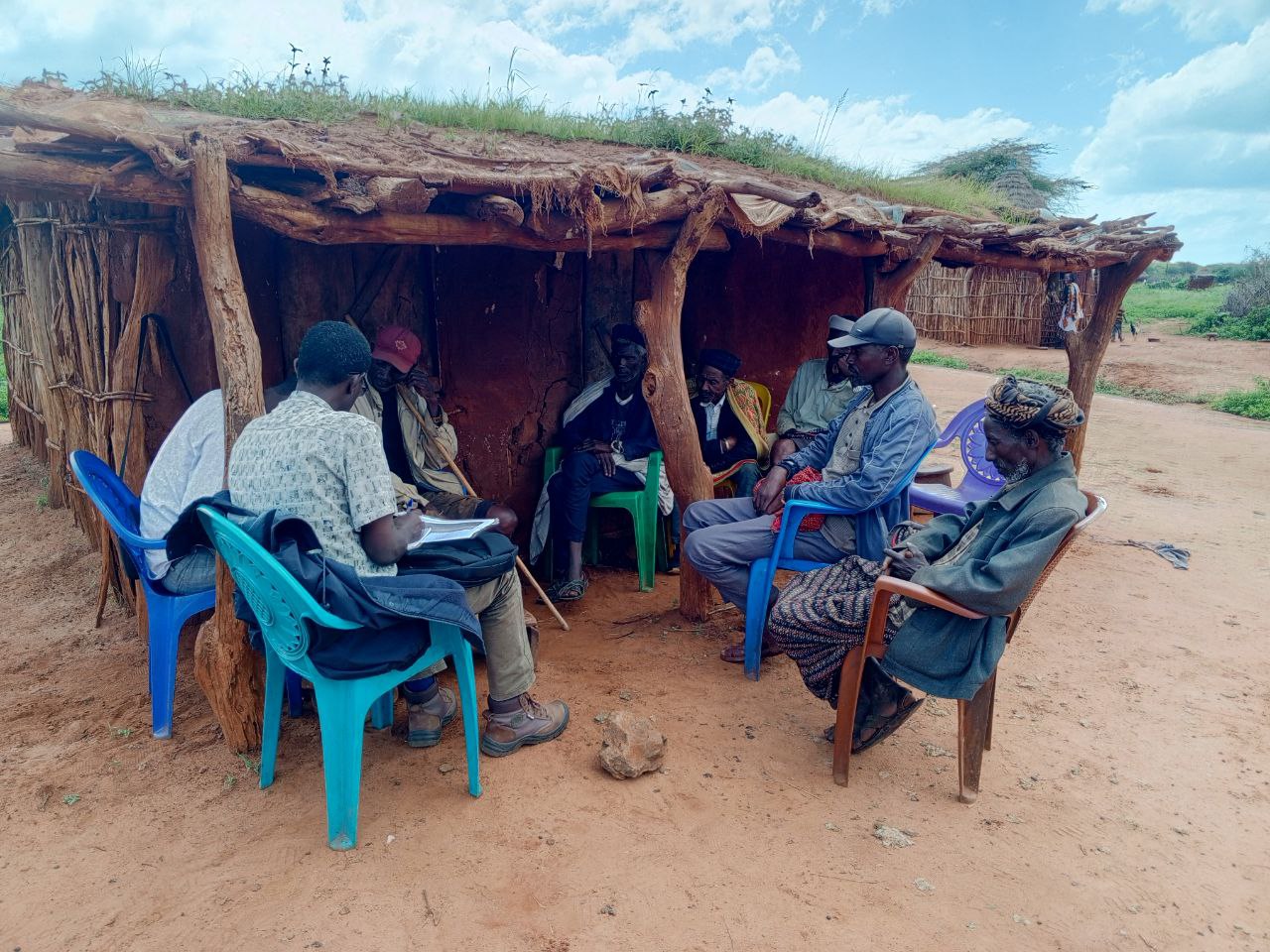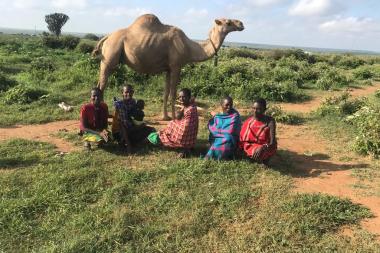Blog
Bridging the gender gap in animal health services as a resilience pathway: Insights from pastoralist communities in Ethiopia and Kenya
Why do pastoralist women and men interact differently with animal health services? How can we use this knowledge to improve the design, delivery and use of veterinary solutions in drylands?
Publisher SPARC
Pastoralism is a vital livelihood system for millions of people in marginalised and underserved regions around the world. Yet this way of life is increasingly being threatened by diverse challenges, including recurrent conflict and climate change.
Inadequate animal health services (AHS), whether preventative, laboratory, diagnostic, pharmaceutical or curative, exacerbate the challenges pastoralist communities face, leading to higher livestock mortality and lower production and productivity. This underscores the urgency of strengthening AHS in pastoral areas and tailoring solutions to inclusively meet the unique needs of pastoralists and their mobile lifestyle.
SPARC partner MarketShare Associates (MSA) conducted a field-based study, which is due to be published in November 2024, where we explored gender-inclusive approaches to AHS delivery in four pastoral communities in the Oromia and Somali regions of Ethiopia, and Isiolo and Samburu counties in Kenya. Our research focused on understanding the behavioural, normative, and social drivers that influence whether and how pastoralists – especially pastoralist women – interact with AHS. Applying a systems lens, we examined how pastoralist men and women interact differently with AHS systems to determine ways in which AHS can be more responsive to gendered behavioural and normative factors.
Taking a systems approach helped to generate context-specific and actionable insights for policy and decision makers in the private and public sectors. In turn, these hold potential to inform the design and implementation of inclusive strategies in pastoralist market systems that aim to increase women’s access to and use of quality AHS, products, and technologies.
Our research examined three research questions:
- How do pastoralist communities interact with animal health delivery systems?
Pastoralists often find that AHS are inaccessible in terms of location and cost, leaving them to resort to self-treating their animals. Self-treatment entails using a blend of conventional and ethnoveterinary practices (defined as protecting animal health and treating livestock illnesses using indigenous knowledge and practices) across all four communities.
Interestingly, our findings showed no notable gender disparities in the types of ethnoveterinary practices used among the communities we spoke with.
“A woman is charged with many responsibilities at home such as those of taking care of the kids. When, let’s say, a woman doesn’t have someone to leave the kids with, then it’s a challenge to look for AHS for the animals. Medicines are also found in towns or markets that are far from our homes. The roads and pathways leading to these towns and markets are lonely and unsafe for women. This limits women from seeking AHS on their own or alone.”
Woman pastoralist, Sagumai village, Samburu County, Kenya
While pastoralist men are primarily responsible for seeking AHS, pastoralist women actively take on this role when they are head of the household, for example when they are widowed or divorced, when men are sick or unavailable, or during emergencies such as when an animal is critically ill. Women in all of the Ethiopian and Kenyan pastoralist communities we spoke to continue to encounter difficulties accessing AHS due to time constraints, limited mobility, lack of knowledge surrounding animal health, and constrained access to financial resources, among other challenges.

- What are the behavioural drivers and social norms that influence how pastoralist communities (particularly women) interact with animal health delivery systems?
Gender roles have become more flexible, with men and women increasingly carrying out livestock management tasks jointly and employing an ‘all-hands-on-deck’ approach. This change is primarily in response to external factors such as climate change impacts or effects; for example, in times of extreme drought, men may need to move livestock longer distances for grazing. Women therefore take on more responsibility for the livestock that remain home for longer periods. While most pastoralists we spoke with consider the current division of labour to be appropriate, some said that women’s workload is growing while men’s roles remain largely unchanged. For example, women generally assume more domestic household responsibilities, but in times of extreme drought, women are more likely to assume responsibility for the household’s water consumption needs and so must and allocate more time to fetching water.
“I don’t think it is appropriate because women are left with many roles, which when combined with the household chores, becomes a big burden ... Yes, sometimes a man will go away for months and leave all the responsibilities of caring for the animals to the women. Sometimes, when an animal gets lost ...it’s the woman who is expected to identify and trace the lost animal. Even when an animal is sick, it’s the woman who is expected to identify it and report to the husband for treatment. When a woman cannot identify a lost or sick animal, it’s a big problem for her. She could even be punished.”
Woman pastoralist, Opirio village, Samburu County, Kenya

When accessing AHS, women face normative constraints in household decision-making and consultation. Women still largely depend on men for permission and guidance when seeking AHS due to their limited knowledge surrounding animal health and men’s primary role in caring for livestock. In some pastoral areas, norms restrict women’s interactions with the predominantly male AHS providers, further limiting women’s access to advice and information.
“Yes, there are challenges I face when seeking AHS due to communication barriers between men and women in the community. Most of the AHS providers are men and therefore I cannot freely interact with them the same way their male counterpart interacts and gets more information on livestock care and treatments.”
Woman pastoralist, Barsaloi village, Samburu County, Kenya
Mobility and time constraints mean pastoral women are more dependent on weekly markets for medicines while pastoral men have more mobility and therefore better access to AHS providers in distant towns. Some pastoralist women (and men) use mobile phones to contact AHS providers or request AH supplies from towns, but network access is very limited in some areas. For more on the role and opportunities of, and constraints to, mobile access, don't miss these SPARC blogs on how men and women agroproducers in Kenya and Ethiopia access and use digital financial and information services.
Pastoralists believe that women are disadvantaged in access to animal health information. This perception was greater in Kenya than Ethiopia. Significantly, we found that that women have limited access to animal health information because they participate less in community meetings and training sessions orgranised by government, Non-Governmental Organisations (NGOs), and veterinary professionals. Even if women eventually receive information when men return home, it is often less comprehensive and of lower quality. Moreover, men already possess generational animal health knowledge passed on to them from childhood by male relatives and the community. They accumulate even more from interactions with other pastoralists when moving with their livestock.
- What can actors – such as government, private AHS providers, other private sector players, NGOs, and pastoralist communities – in animal health systems do to make access to and use of AHS and products more responsive to these norms?
Looking ahead, our research shows that enhancing last-mile delivery of AHS is crucial and requires more public-private partnerships in Kenya and Ethiopia. Pastoralist women must be at the centre of preventative animal healthcare that can help to sustain pastoralist livelihoods and support resilience. To make AHS more gender inclusive, we recommend:
- Closing the literacy and AH information gap between pastoralist men and women, enabling women to access AH information more freely and equitably, especially through inclusive channels (e.g. non-written materials, community meetings and at weekly markets etc.)
- Bringing AHS and products closer to pastoralists through last-mile delivery, especially for pastoralist women whose mobility, time, and financial constraints often prevent them from traveling to access AHS. Public-private partnerships and innovative delivery models could support this last-mile delivery, as explored in our second blog on Improving women pastoralists’ access to animal health services: recommendations in Ethiopia and Kenya.
- Channeling investments to enable pastoralist women to access proactive preventative care. This begins with understanding that early investments in preventative healthcare for livestock can minimise potential losses from delayed diagnoses and treatment. Bundled service provision, for example bundling AHS with other products such as insurance or access to capital, could improve women's access to AHS without increasing the burdens of additional time and cost.
- In addition to or provided alongside information campaigns, encouraging AHS models that incentivise regular interaction with providers and demonstrate the financial benefits of preventative care could be effective for both pastoralists and providers.
- Making AHS more inclusive for women. AHS in pastoral areas are largely dominated by men. In patriarchal pastoral areas, women are not able to interact as freely with men outside their household as men are. In the longer term, increasing the number of female AHS providers would be an optimal outcome. In the shorter term, with social norms in mind, facilitating meetings between women pastoralists and service providers could also be effective.
SPARC will host a webinar this November to discuss these research findings and recommendations.


